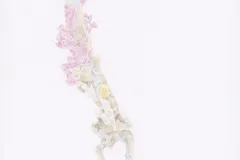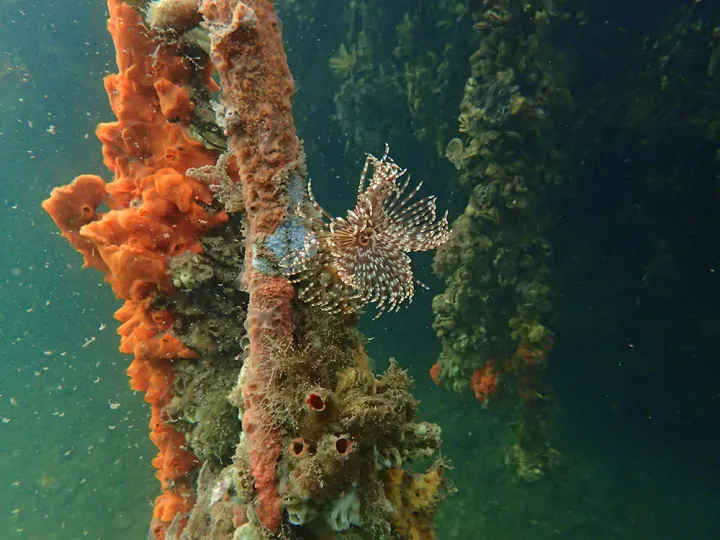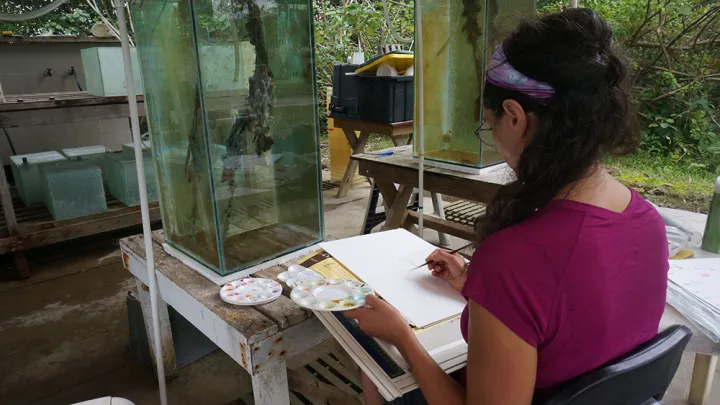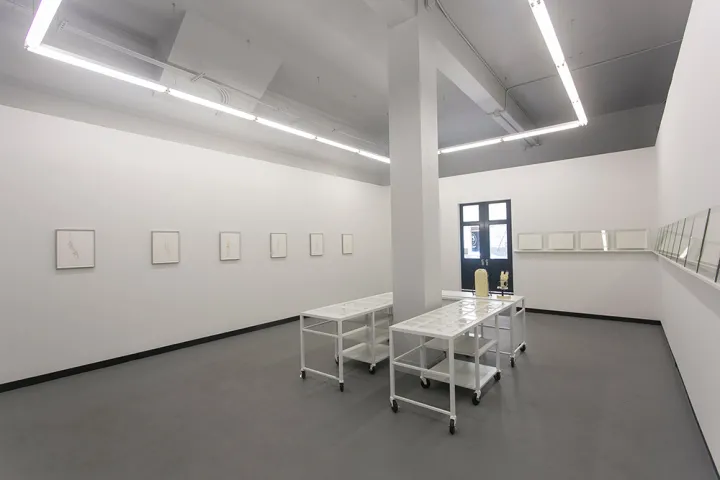Up Close and Personal with a Mangrove Root

I got a lot of funny looks at the airport when I opened the oversized cooler for the baggage inspector. As a marine biologist conducting research everywhere from the Antarctic to the Galapagos, I’ve carried a lot of strange things through airports in the name of science, but this was the first time in the name of art. My cargo was a collection of live mangrove roots teeming with life. Each was encrusted with a unique assortment of organisms including sponges in a rainbow of colors, razor-sharp oysters, and the intricate floral structure of feather duster worms. I was transporting my precious cargo from the Smithsonian Tropical Research Institute (STRI) Bocas del Toro Research Station on the Caribbean coast of Panama to Irene Kopelman’s exhibit in the historic Casco Antiguo district of Panama City.
Irene is an internationally recognized artist based in Amsterdam who has pioneered the use of various media including ink, watercolor and oil paints, and ceramics to capture in her words “the intricacies” of nature, with particular attention to how scientists put “boundaries” on the vast continuum of the natural world in order to study a given pattern or phenomenon. Irene first came to STRI on a Smithsonian Artist Research Fellowship, and over several trips in the past four years she has partnered with scientists in Panama’s rain forests, sandy beaches, and laboratories to convey in her unique perspective on everything from the soaring vine-covered tree canopy to the pea-sized feeding pellets of fiddler crabs.
When Irene approached me for what would become my first collaboration with an artist, I was immediately struck by her capacity to communicate the essence of a complex living system with a steady hand, clear eye, and clean esthetic. I knew I had to find a challenge for her. I immediately thought of my research group’s study of life among the interwoven thicket of mangrove prop roots that function as a protective nursery habitat for juvenile fish. Larger predators are stymied by the complexity of the root structure. But not Irene. Undaunted, she created a series of drawings that committed the branching and twirling form of the roots to paper with her characteristic attention to scale and accuracy.
What next captivated Irene’s attention was the life attached to roots below the water line where the complexity of form has the added dimension of colors including pumpkin orange, sky blue, and candy-apple red. Irene wanted to “depict the life ordinarily hidden below the water.” She commissioned the construction of customized aquaria so that she could commit the hours of detailed observation needed for one of her pieces. Those earlier drawings of the mangrove root habitats and paintings of life on mangrove roots were published alongside her other recent productions in the book Entanglement. But for Irene, the creative process would not be complete until she could bring her art, the mangrove roots, and the creative process that connects the two, into a public forum.
In a 2016 exhibition, Irene was able to do just that. In her exhibit "Underwater Workstations" at the DiabloRosso gallery in Panama, Irene not only displayed her earlier mangrove works, but she herself was on display as she drew in real-time the mangrove roots showcased in another set of specially constructed aquaria. Hence, my trip through the airport with a fresh supply of roots to stock the exhibit’s aquaria. I’ve taken dozens of students into mangrove root habitats on field expeditions, but by taking roots into the city for Irene’s exhibit, I estimate that hundreds if not thousands of viewers experienced the underwater life on mangrove roots for the first time with the added benefit of Irene’s artistic perspective as a guide.
Irene views art as a compliment to science that offers “another way to access knowledge about the nature.” She developed this perspective on the way to her Doctorate in Fine Arts from Utrecht Graduate School of Visual Art and Design and The Finnish Academy of Fine Arts. Within the Smithsonian, she is among the first Artist Research Fellows to venture to STRI in Panama, and she has further set herself apart by leaving behind archived museum collections in favor of immersing herself in nature at remote field stations. My experience working with Irene has taught me that understanding the natural world through first-hand observation, and blurring disciplinary boundaries by sharing perspectives through collaboration, are vital pursuits whether each of us interprets the natural world through data sets or paintings.
___________
Irene Kopelman’s exhibit Underwater Workstation ran April 23-May 28th, 2016 at the DiabloRosso gallery in Casco Antiguo, Panama. Her recent collection of works accompanied by her narrative and essays by collaborating scientists is available in Entanglement (publisher Roma Publications). More information about her art is available at http://www.irenekopelman.com/.




